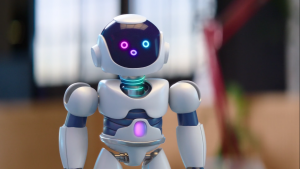Artificial intelligence has seen a remarkable evolution in recent years, and the rise of generative AI represents a significant milestone in this journey. Generative AI refers to machine learning (ML) models that create new content like text, images, videos, and more based on patterns learned from existing data. This technology has significant implications across various applications, from art and entertainment to healthcare and scientific research. Given the tremendous potential of generative AI, it’s essential to fully explore its capabilities and limitations to understand its impact on businesses and society.
Background of Generative AI
The history of AI can be traced back to the 1950s when the first computer programs were developed to mimic human reasoning. Over the years, the domain has evolved significantly with the advent of machine learning and deep learning techniques, leading to the development of powerful AI models. There are several types of AI models, including:
- Supervised learning: trained on labeled data and can predict based on new input.
- Unsupervised learning: learns from unlabeled data to identify patterns and relationships.
- Reinforcement learning: learns through trial and error and receives rewards or punishments for its actions.
- Natural language processing: can understand, interpret, and generate human language.
- Computer vision: can recognize and analyze visual data like images or videos.
- Deep learning: learns from complex, multi-layered neural networks to identify patterns and relationships.
Generative AI is a powerful model within deep learning that uses complex algorithms to create new content, such as images, text, or audio, that closely resembles existing data. Unlike other types of AI that focus on making predictions or classifications, generative AI can generate unique content, opening up many exciting possibilities.
Understanding Generative AI
Generative AI uses complex algorithms to analyze and learn patterns from data such as images, text, or audio. Once the algorithm learns these patterns, it can generate new content which resembles the original data. This process involves a feedback loop where the algorithm generates new content and adjusts its approach based on how closely that content resembles the original data. Over time, the algorithm can become more sophisticated in its ability to generate new content that is both original and realistic. Some examples of Generative AI tools include:
- Text generation: generates written content such as articles, stories, poems, chat, or computer source code. Examples include GPT, ChatGPT, Codex, LaMDA, BLOOM, LLaMA, Transformers, etc.
- Image generation: generates or modifies new or existing images. Examples include DALL-E, StyleGAN, DeepDream, Pix2Pix, etc.
- Music generation: creates original music compositions or remixes based on existing music. Examples include Amper Music, AIVA, DeepJ, etc.
- Video generation: creates new video content or modifies existing videos. Examples include Deepfakes, Vid2Vid, VideoGPT, etc.
- Speech synthesis: generates human-like speech or converts text into speech. Examples include Google Cloud Text-to-Speech, Amazon Polly, IBM Watson Text-to-Speech, etc.
- 3D modeling: creates 3D models of objects or environments. Examples include Sketch2CAD, GANverse3D, DeepSDF, etc.
The Rise of Generative AI
Advances in computing power and improvements in deep learning algorithms have led to the rise of generative AI. As computing power has increased, training larger and more complex models to generate high-quality content has become possible. At the same time, improvements in deep learning algorithms, such as GANs and VAEs, have made it easier to train generative AI models on large complex datasets. Some other recent Generative AI advancements include:
- Improved training methods: such as attention mechanism, curriculum learning, transfer learning, and more, enable generative models to learn with more complex but lesser training data.
- Multimodal generation: such as GPT-4, can process and comprehend various inputs from multiple modes or modalities, such as speech, text, images, and videos.
- Interactive generation: like ChatGPT, can generate natural language responses to user input, allowing for more interactive and conversational AI systems.
These advancements have enabled the development of a wide range of Generative AI applications, including:
- Creative: creates new content and experiences, such as media, art, fashion, and entertainment.
- Marketing: creates customized advertising content and analyzes customer behavior.
- Gaming: makes new game content, such as levels and characters, that can adapt to player behavior.
- Healthcare: creates synthetic medical images and aid in diagnosis and treatment.
- Finance: uses AI for fraud detection, risk assessment, and financial forecasting.
- Scientific research: simulates complex systems and generates new hypotheses for scientific experiments.
- Manufacturing: optimizes product design and production processes.
- Education: creates personalized educational content and assessments.
Implications of Generative AI
The rise of Generative AI has far-reaching implications in many areas, including opening up new opportunities, such as:
- Increased automation in the workplace: can automate many of the repetitive tasks currently done by humans, allowing for more efficient and cost-effective operations.
- Improved customer service: can automate customer support operations and provide timely, personalized help.
- Better decision-making: can be used to analyze large datasets and generate insights that we can use to make more informed decisions.
- More personalized user experiences: can generate content tailored to users’ specific needs and preferences, resulting in more engaging and customized experiences.
Despite the numerous opportunities presented by Generative AI, there are also several challenges and limitations, including:
- Ethical considerations around misuse, transparency, privacy, ownership, and accountability.
- Potential for biases and inaccuracies in generated content due to insufficient or biased training data.
- Improving the objective evaluation of the quality of generated content.
- Managing high computational and data requirements for training generative AI models.
- Balancing the benefits of automation with potential job losses and other economic impacts.
As Generative AI becomes more advanced and widespread, it is essential to work towards maximizing its benefits while minimizing its potential harms.
Future of Generative AI
Based on Generative AI’s current trends and developments, some of its future predictions include:
- Improved AI models: will continue to evolve and improve even more, capable of creating high-quality images, videos, and text.
- New applications: will open up new applications, such as creating synthetic data for training AI models, generating virtual environments, and enhancing digital communication.
- Problem-solving: will help identify patterns and relationships in data that humans may be unable to detect independently, leading to more effective problem-solving.
- Increased adoption: will become more widespread, with businesses and industries adopting it to create personalized content, generate new designs, and enhance customer experiences.
- Enhanced collaboration: will promote cooperation between humans and machines, allowing for more creative and efficient workflows.
The impact of Generative AI on society will depend on how it is used and regulated. It can bring many benefits, such as improved efficiency and creativity, but also poses risks, such as the potential for biased or misleading content. As such, there will be a need for careful consideration of the ethical, social, and legal implications of Generative AI, as well as policies and guidelines for its responsible development and use.
Conclusion
Generative AI is a rapidly evolving domain transforming how we think about intelligent machines. With its ability to generate new and creative content, it has the potential to drive innovation and growth in various industries. However, it also presents important ethical and social considerations we must address as we move forward.
Looking toward the future, we expect continued advancements in Generative AI and its increased adoption in various sectors. As we navigate this new era of intelligent machines, it is crucial to prioritize responsible and ethical development while embracing the opportunities presented by Generative AI.



